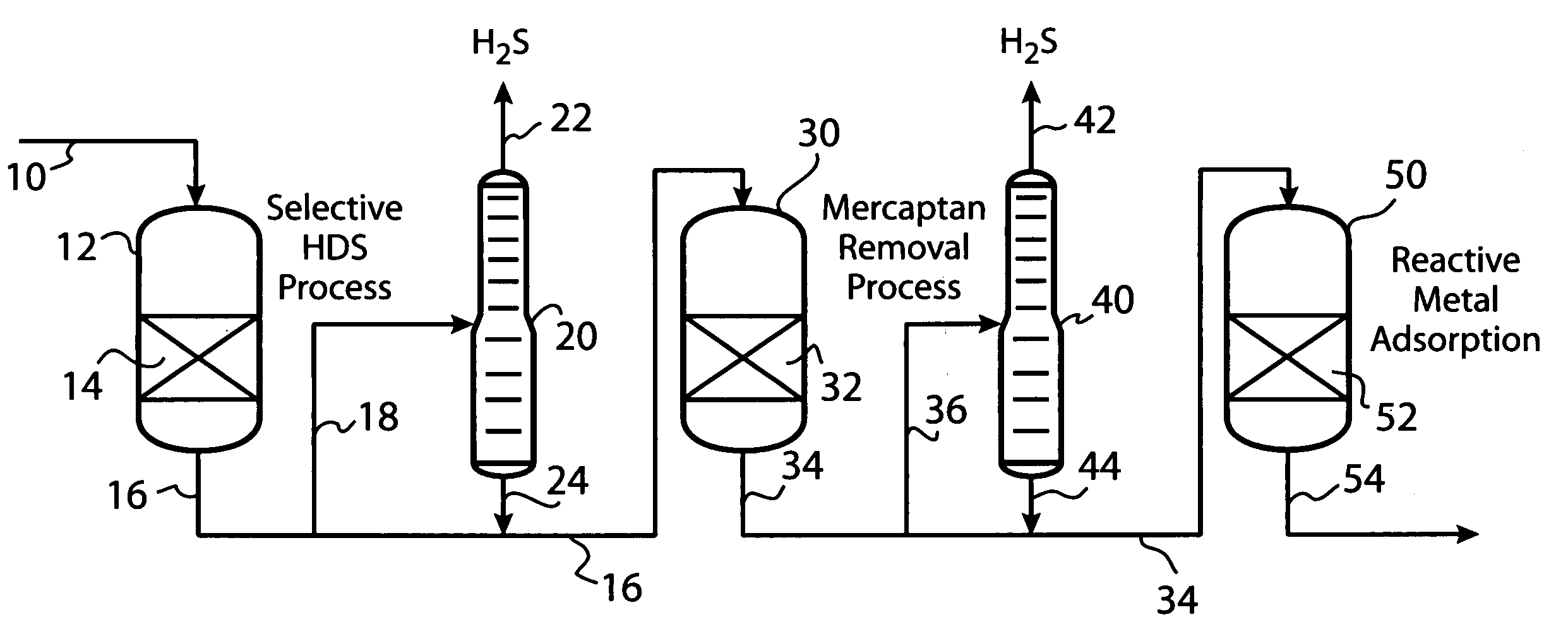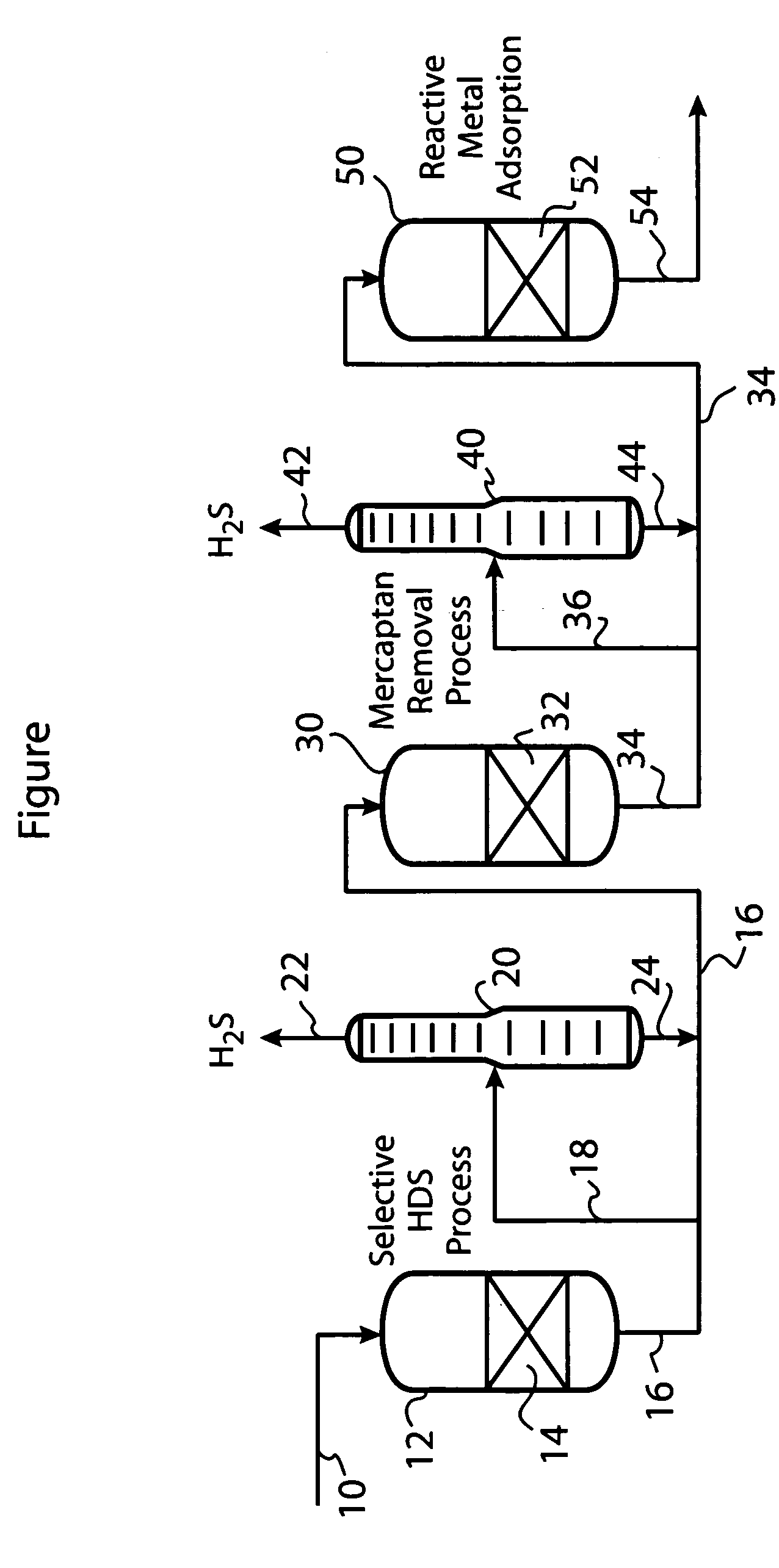Process for removing sulfur from naphtha
a technology of naphtha and sulfur, which is applied in the field of process for removing sulfur from naphtha, can solve the problems of increased production cost of high octane fuels, loss of desirable molecules contributing to desirable octane, and further loss of desirable molecules contributing to high octane, and achieves the effect of low sulfur produ
- Summary
- Abstract
- Description
- Claims
- Application Information
AI Technical Summary
Benefits of technology
Problems solved by technology
Method used
Image
Examples
example
[0029] A reactive metal adsorbent was prepared by impregnating a silica support with nickel hexahydrate containing a triethanolamine dispersant. The sample was dried by heating in air at 60° C. and then ramping the temperature to 350° C. to convert the metal to the oxide form.
[0030] The adsorbent in oxide form was then reduced to Ni metal form by placing the sample in a flow-through reaction unit and in contact with flowing hydrogen. The temperature was ramped to 350° C. After holding at 350° C. for 2 hours, the adsorbent was cooled to 200° C. A gasoline-range hydrocarbon blend containing 80 ppmw sulfur as thiophene was then introduced to the reaction unit containing the Ni adsorbent at 210 psig (1549 kPa), 200° C. and 1 liquid hourly space velocity. This feed is similar to the product obtained from step (2) of the present process. The product resulting from feed treatment with the Ni adsorbent was then cooled and analyzed for sulfur. The product was found to contain less than 1 wp...
PUM
| Property | Measurement | Unit |
|---|---|---|
| pressures | aaaaa | aaaaa |
| temperatures | aaaaa | aaaaa |
| temperatures | aaaaa | aaaaa |
Abstract
Description
Claims
Application Information
 Login to View More
Login to View More - R&D
- Intellectual Property
- Life Sciences
- Materials
- Tech Scout
- Unparalleled Data Quality
- Higher Quality Content
- 60% Fewer Hallucinations
Browse by: Latest US Patents, China's latest patents, Technical Efficacy Thesaurus, Application Domain, Technology Topic, Popular Technical Reports.
© 2025 PatSnap. All rights reserved.Legal|Privacy policy|Modern Slavery Act Transparency Statement|Sitemap|About US| Contact US: help@patsnap.com


